Good morning. Today’s post is about an opportunity I had to rescue a bird.
I’m still using a crutch to walk so I don’t go far. Yesterday morning I was birding in our local park, a five-minute walk from home, and it had been nearly an hour so I was about to head back for breakfast. Suddenly I heard several Eurasian Magpies making a big fuss. Since I’ve been birding, I’ve learned to pay attention when birds are upset.
Magpies are corvids (like crows, ravens and jays) and are found in the US, Europe, the Middle East, Asia and Australia. Here in Spain, we have two types: the shyer Iberian Magpie, an elegantly dressed bird, is not usually found in the city, but can be seen pretty easily in the countryside. My friend, Victor Escribano generously shared some of his photos of Iberian Magpies below.



The other type of magpie found here is the noisy, ubiquitous Eurasian Magpie. I also think the Eurasian Magpies are quite pretty with their bold black and white pattern. In the right light they sport a greenish/bluish sheen on their glossy backs. In flight, their tails flair out into a cool wedge shape as they glide between trees or over lawns.
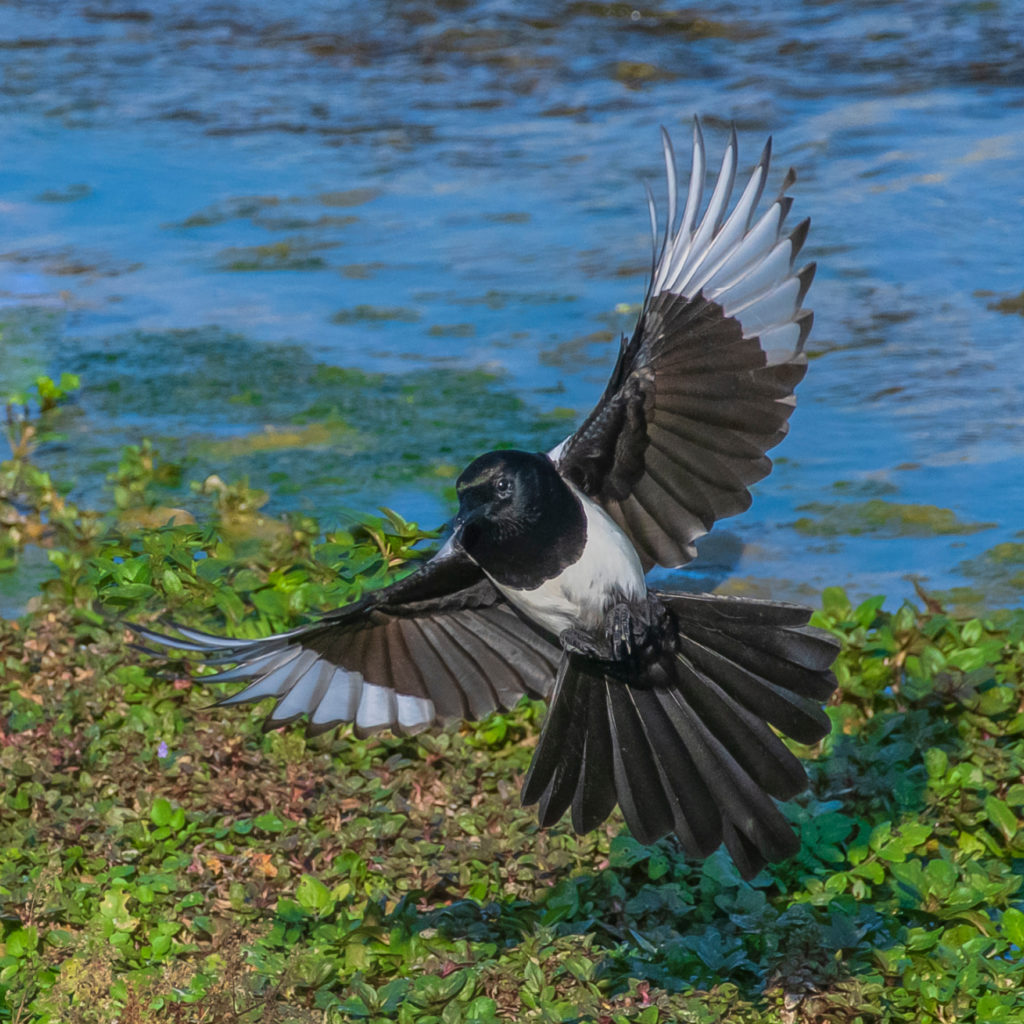
When I heard the magpies chattering very loudly, I decided to go see what the commotion was all about. I was thinking it could be a raptor (they’re migrating now on their long journey from northern Europe back to Africa for the winter, and a hungry bird will sometimes stop for a quick snack along the way) or an owl, or maybe even a snake or a cat.
The magpies were all in one tree, so I followed their gaze, peering deep into the branches and then I saw it–a magpie hanging by its neck from a white string.
It was on the far side of the tree and its wings were fluttering sporadically, obviously on its last legs. Distressed, I headed toward the stony steps that would take me closer to the tree, looking around for someone who could also help. The park was pretty empty, but fortunately there was a grounds maintenance person, sweeping in the lower level of the park.
I called to him (in Spanish, of course) and asked him to help me save the bird. He was an older gentleman, close to retirement age, his face wrinkled and dark from the sun. “What bird? I don’t see anything,” he called back. I told him to hold on and hurried down the uneven steps as fast as I could.
When we got to the bird, we could see it dangling by its neck, only occasionally moving, about 12 feet up in the tree. I think it’s caught in a mask, he said. But I don’t know how to help. I don’t have a ladder.
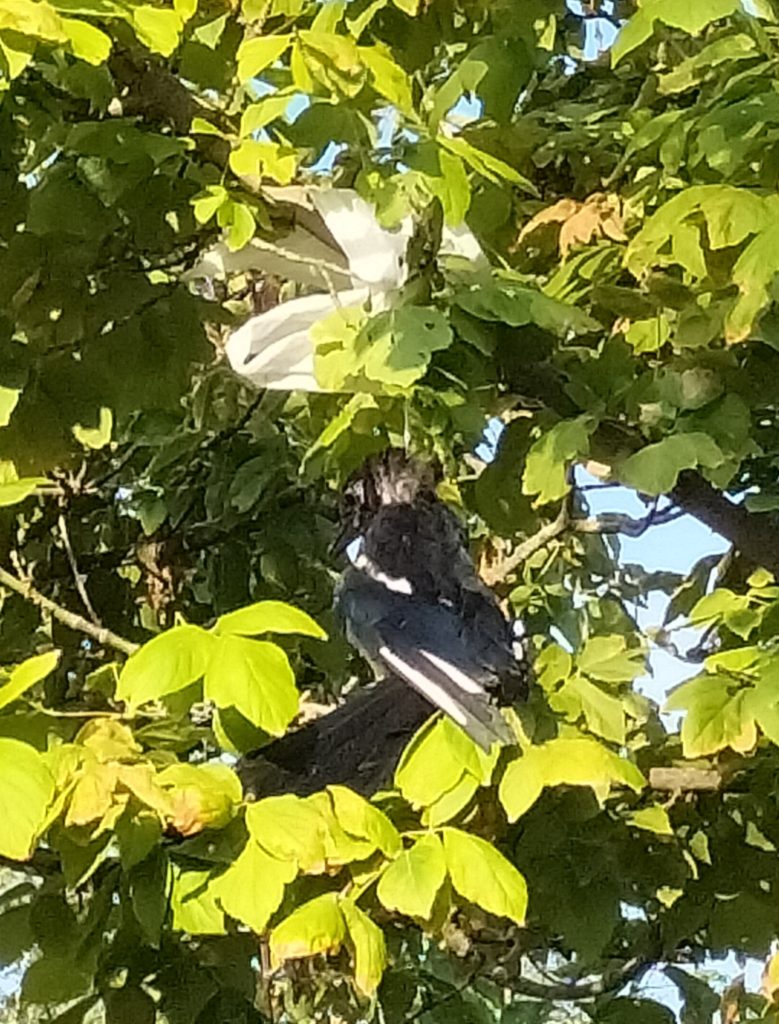
I asked him to get his broom and see if that would reach enough to pull the branch down.
He hurried back and after a few missed swipes, he was able to hook the branch and bring it down. Soon we had the magpie in hand. I directed him to hold the bird, pinning its wings, while I dealt with the head.
“Ten cuidado que no te pique,” he advised. Be careful it doesn’t bite you.
It wasn’t a mask that the bird was trapped with. A tight white plastic cord was wrapped around the bird’s neck like a noose, and this cord was attached to a plastic bag. I wished we had scissors, and as if reading my mind, he lamented that he didn’t have any in his cart.
Then, speaking soothingly to the bird, I used the bag like a potholder to grab its beak and anchor it shut with my left hand while I softly ran my finger around the bird’s thin little neck, looking for a way to release the cord. The bird tried to flutter but didn’t protest too much. Unfortunately, there seemed to be no way to untie it. The cord was a solid all the way around.
Then I looked back at the bag, thinking hard about what I could use to sever the tie. My keys? A sharp rock? I scanned the length of the cord—about 8 inches, checking how it was attached to the bag. All of a sudden, my paradigm shifted: it wasn’t a cord attached to the bag, it was the bag’s handle, stretched out and very tightly wound around and around.
Still talking softly to the bird, I released its beak and began untwisting the bag, checking to see if I was going in the right direction and making sure to stay clear of the occasionally snapping beak. After several turns the man understood what I was doing. “Sí, es verdad. No me había dado cuenta. Sigue así. ” Yes, you’re right. I hadn’t realized it. Keep going.
About 15 seconds later I had the whole thing untwisted and off the bird. It moved its head gingerly left and right, as if checking that it could really move.
“¿Qué hago ahora?” the man asked.
Place it on those bushes, I instructed.
As he stepped back and away, the bird shook itself and then flew to another tree about 30 feet away.

How did you know the bird was in trouble, he asked. You were up there, and you couldn’t have seen the bird down here, on the other side of the tree.
I told him about hearing the racket that the other magpies were making. And I did see the bird, with my binoculars.
“Ah, claro,” he said. Of course. He’d been sweeping in that area and had heard the birds too but never thought to look up to see what the matter was. To him it was just noise.
But how do you think it got caught like that?
I explained that Magpies are very intelligent. Checking the bag still in my hand I now noticed that inside was a baggie of what looked like potato chip crumbs. I bet it fished the bag out of the trash can and took it up to the tree to try to get the treat, then somehow got tangled in the bag’s handle. When the magpie tried to fly away it would have been halted and thrown off the branch, swinging around and around as the handle wound tighter and tighter into the taut “string” that I had found.
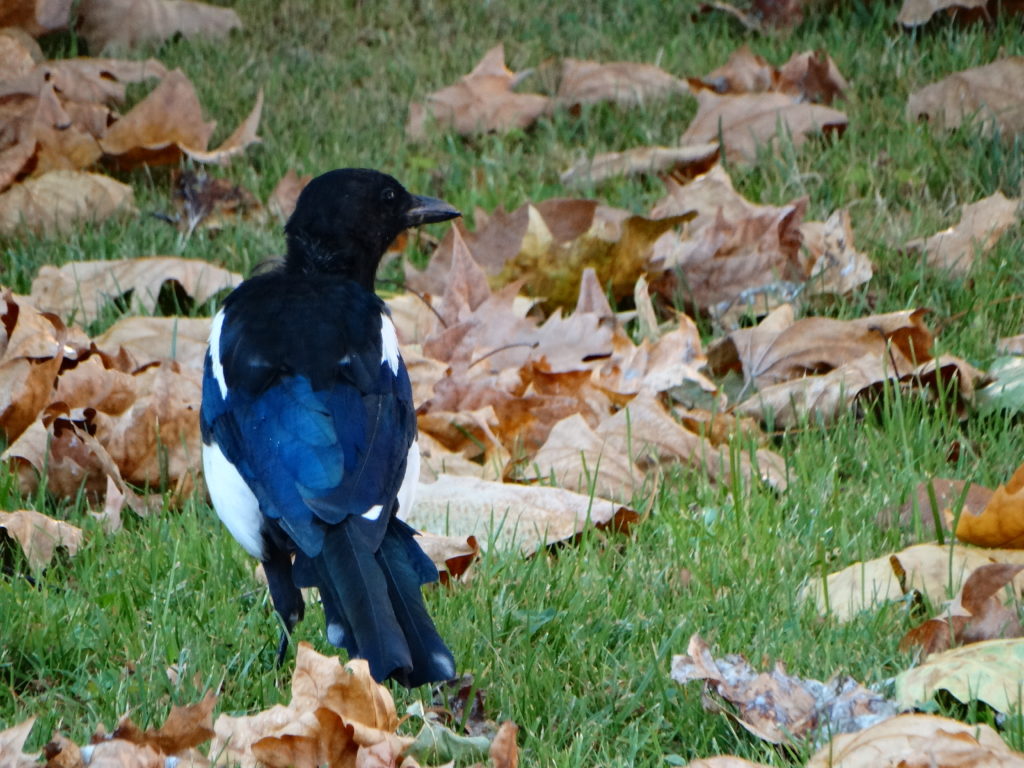
“Ud. tiene mucha humanidad,” he said. You are very humane. You were speaking so kindly to the bird. But, where are you from? You weren’t speaking in Spanish.
And that’s when it dawned on me. I had comforted the bird in English! I was so focused on helping the little thing and soothing it, that I hadn’t even realized that I had switched languages!
I thanked the man for his help. He handed me my crutch, which had fallen on the ground, and went to retrieve his broom.
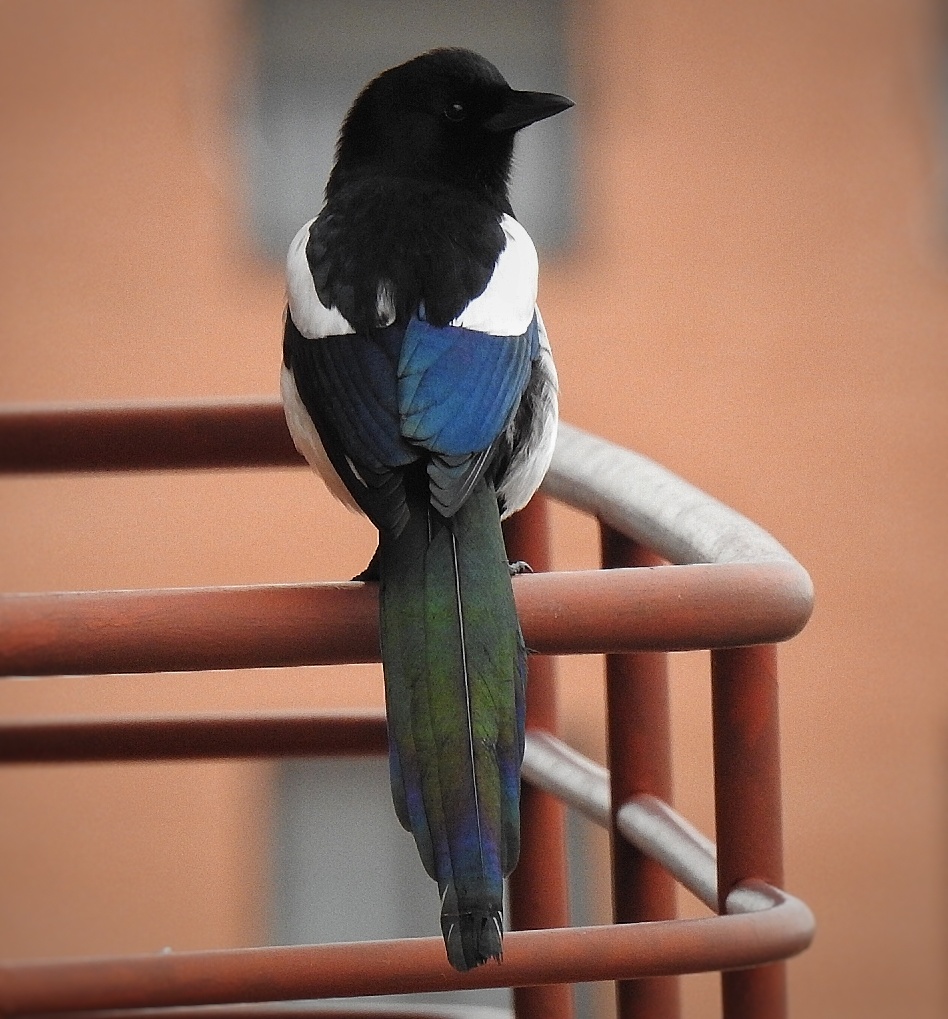
On my way home I whispered thanks to the Universe for letting me be in the right place at the right time to help a fellow creature in need. Also, if the other magpies hadn’t made so much noise, I would have been there but not known that their companion was in distress.
As I was reflecting on the softness and warmth of the small being I’d just had in my hands, I also started thinking of all the ways we unintentionally harm birds. Every year untold numbers of birds get hung accidentally when they get tangled in pieces of discarded string or rope. And most perniciously, fishing lines caught in trees are death snares to birds hunting along rivers. Other birds fly into electrical wires, snapping their necks. Many more, especially ones who spend a lot of time on the ground like pigeons, get pieces of thread tangled around their toes and end up losing part or all of their foot.
Discarded masks and plastic bags are another an unintentional menace. I pull the loops off my masks before I throw them away. But I had never thought of cutting (or tying up) the loops of plastic bags before disposing of them.
Anyway, I’m so thankful to have helped that little bird. I hope you enjoyed this blog post and as always, please check out (and tell someone about) my novels here.


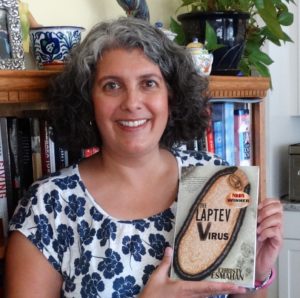
6 comments
Skip to comment form
Amazing writing and such a touching story! Inspired by your kindness 😊
Author
Thank you! So kind of you to say that!!
You deserve a big star for saving this bird. Bravo.
Author
Hugs!
Again, Christie, you present the reader with such an interesting, and touching, story. It could be part of a storybook: the Entrapped Magpie Tale. You describe everything in such a detailed manner that I could view the bird in your hands and didn’t need AR glasses to be there.
Author
Thank you for your kind comments, Salvador! Hugs!